During the weekend of the MiArt fair, the action didn’t only take place in Milan’s city fairground. Many of the city’s galleries also took the opportunity to open the doors to their newest exhibitions, and one of the most interesting ones turned out to be Nikolas Gambaroff’s Quality Interiors at Giò Marconi. The German-born, New York-based artist is presented with his first solo show in the gallery, including new works of polyester window film or silicon among a set of mannequins and one of his perhaps better-known newspaper paintings.
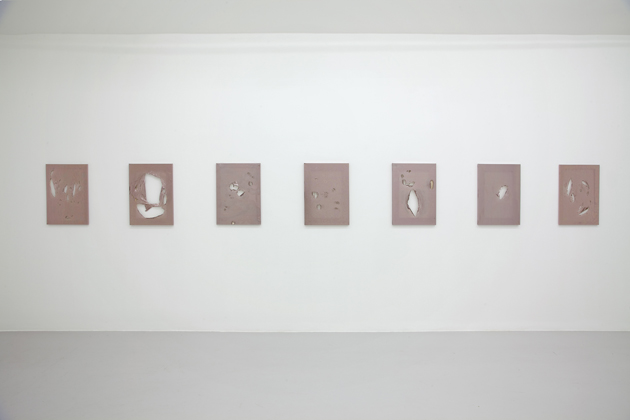
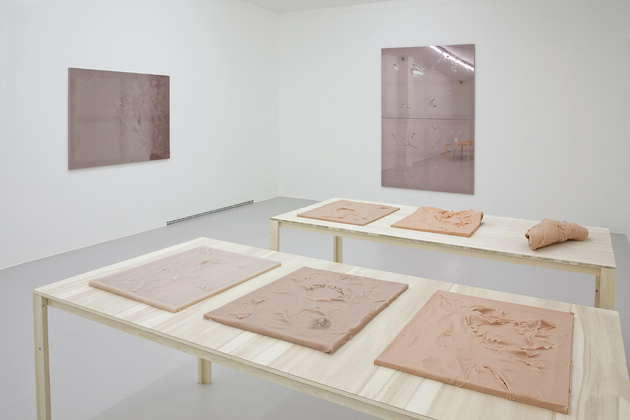
For Quality Interiors, with its title perhaps giving an ironic nod to the madness of last week’s Salone del Mobile, Gambaroff filled the three ground floor rooms of the gallery with lusciously pink works made of Polyethylene Terephthalate Window Film. Usually abbreviated PET, the film is normally used in synthetic fibers, food and liquid containers, or even film and solar cell technology. The specific type used by the artist is usually applied to the windows of commercial buildings to convert the sunlight into infrared radiation and reduce the energy flow. Treated in different ways and torn apart to reveal the back of the structure, Gambaroff’s works look fragile yet alluring, mirroring the visitors walking by. On wooden tables, the flat, wrinkly silicon works in nude pastel pink hues give more of a matt, tactile impression, as a reminiscence of human flesh.
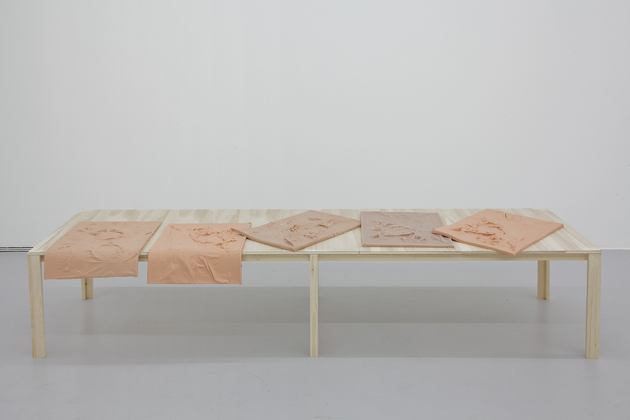
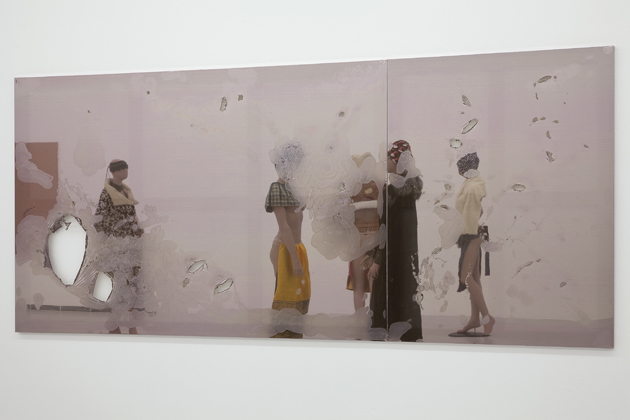
The largest room includes a set of half-dressed mannequins, a collaboration between Gambaroff and Nina Yashar, the interior design priestess and founder of Milan’s Nilufar Gallery. Beautiful fabrics in tribal patterns are wrapped in unorthodox matters around the mannequins, mirrored in the shiny surface of the pink window film work. The mannequins become a constant audience in relation to the work, gazing in different directions in a play with different ways of seeing and being seen.
Bearing Gambaroff’s more well-known newspaper-based work in mind, Quality Interiors shines a new light on his artistic production. Still, the works revolve around the same themes as before, in a dissection, deconstruction and re-evaluation of what painting is today. Given the impressions in Giò Marconi, it’s a very human thing.
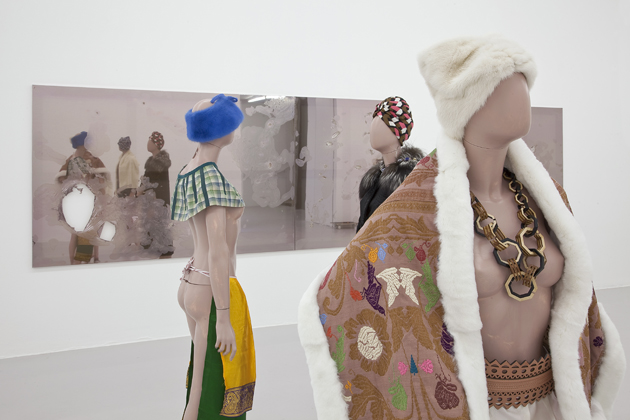
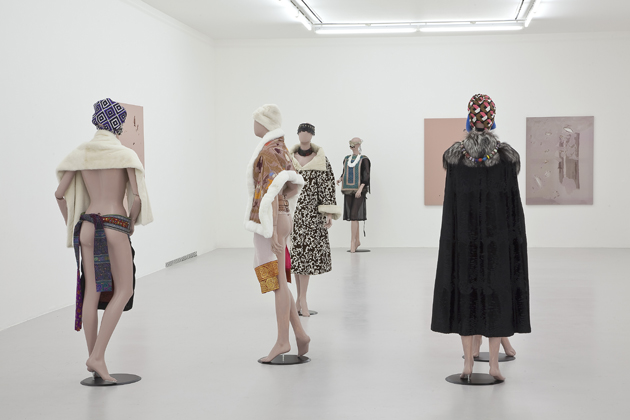
The exhibition is on view until May 18th 2013.
Helena Nilsson Strängberg – Image courtesy of the artist, Gió Marconi
